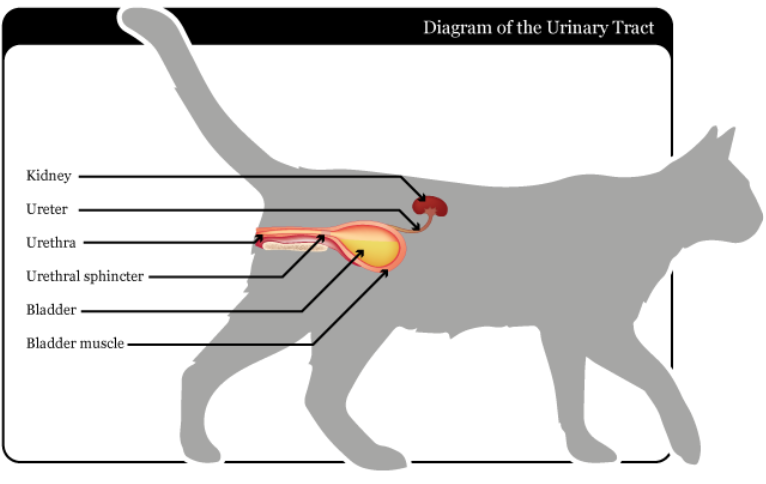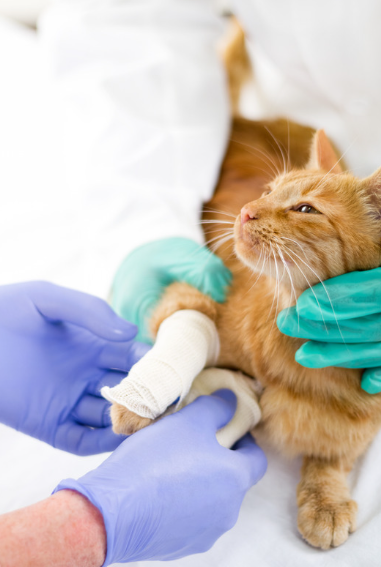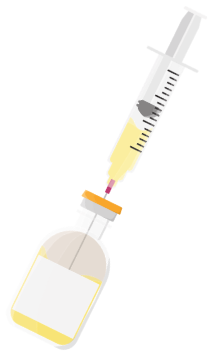
Feline Urethral Obstruction
What is it?
Cats (especially male cats) can suffer a blockage in their lower urinary tract, which can prevent them from urinating.
A urinary catheter has been passed to allow the inflammation to subside. This has now been removed and your cat is urinating well.
However, recurrence can be common

Possible Causes
· Stress - the most common cause in cats
· Bladder stones - uncommon
· Infection - rare
What can be done to prevent recurrence?
- Pain relief and medication to help with the inflammation and spasm may be prescribed
- Antibiotics are ONLY indicated if there is strong evidence for infection
- A special urinary diet such as Hill’s c/d or Royal Canin Urinary S/O may be recommended
- To minimize stress, the following recommendations may help:
· Increasing the number of litter trays - at least one per cat plus one extra
· Avoiding sudden changes in litter type
· Increasing water intake - water fountains, additional water bowls of varying shapes and sizes in difficult locations, wet food etc.
· Encouraging play and environmental enrichment – toys, catnip, cat trees or beds in high places
· Using Feliway diffuser or spray – this contains pheromones that make cats feel more relaxed
· Our vet may recommend medications to help with stress
Complications
Things to look out for include:
· straining to urinate
- dripping urine or no urine
· very bloody urine (mild bloody urine may be normal for 1-2 days after discharge)
If you’re not sure if your cat is able to pass urine for >12 hours and is straining, assume it could be an emergency and you should call us immediately.
Related Blogs




